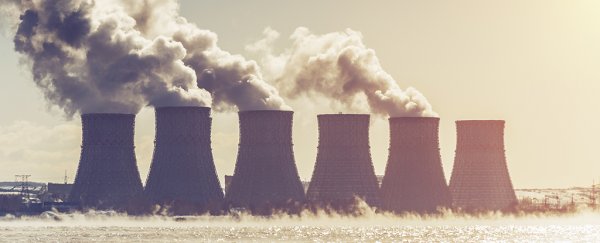As we continue to see warming glaciers collapse and melt into the ocean, we're potentially looking at a ticking time bomb of buried nuclear material, according to new research.
Scientists have analysed 17 glacier sites and found fallout radionuclides (FRNs) trapped within ice surface sediment called cryoconite at all of them – covering the Arctic, Iceland, the European Alps, Antarctica and other areas. In some cases concentrations of radioactive material are orders of magnitude higher than in areas that don't have glaciers.
The findings highlight just how far fallout from nuclear disasters like Chernobyl and Fukushima can travel, as well as sounding a warning that ongoing climate change could come with another unwanted consequence – re-released radioactive material.
"Research into the impact of nuclear accidents has previously focussed on their effects on human and ecosystem health in non-glaciated areas," says one of the team, Caroline Clason from the University of Plymouth in the UK.
"But evidence is mounting that cryoconite on glaciers can efficiently accumulate radionuclides to potentially hazardous levels."
Radioactive fallout that lands on snow and ice forms a heavier sediment than when it lands elsewhere. It's then captured and stored in cryoconite – at least until the ice starts melting.
Caesium and americium was among the dangerous radioactive material found by the researchers. At Switzerland's Morteratsch glacier, they logged their highest caesium-137 recording – 13,558 Becquerel-per-kilogram. The legal limit for caesium-137 in meat eaten by humans is 1,500 Bq/kg.
The team saw spikes in the sampled ice cores showing the impact of Chernobyl, as well as large-scale nuclear weapons testing in the 1950s and 1960s. Even eight years on, a lot of the fallout from Fukushima has yet to be consolidated as ice sediment.
"Radioactive particles are very light so when they are taken up into the atmosphere they can be transported a very long way," Clason told AFP.
"When it falls as rain, like after Chernobyl, it washes away and it's sort of a one-off event. But as snow, it stays in the ice for decades and as it melts in response to the climate it's then washed downstream."
What scientists don't know – and what the research team plans to find out next – is how these FRNs might contaminate the environment and the food chain once released again. Reindeer and their herders, for example, could be among the first affected.
The small silver lining of the research is that the team thinks cryoconite could be helpful in cleaning up land contaminated by nuclear accidents. The work is continuing into how well the sediment holds fallout, and where that fallout might go next.
"Very high concentrations of radionuclides have been found in several recent field studies, but their precise impact is yet to be established," says Clason.
"Our collaborative work is beginning to address this because it is clearly important for the pro-glacial environment and downstream communities to understand any unseen threats they might face in the future."
The results of the research have yet to be published, but were recently presented at the 2019 General Assembly of the European Geosciences Union (EGU).
